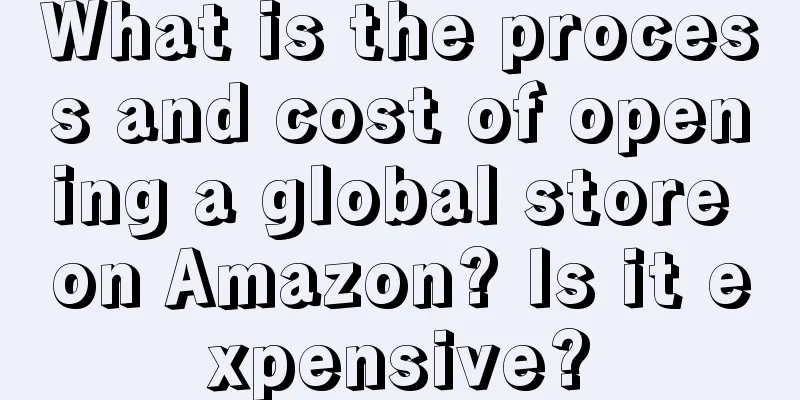Write an activity review report, this is the best step I have ever seen

Nowadays, companies launch a large number of promotional activities every year, so data analysts are indispensable for reviewing the activities. Here we recommend the "Seven Steps to Poetry Method" to conduct a clear and comprehensive review. 1. Clear goalsThe literal meaning of promotion is to promote sales, that is, to invest extra resources to obtain additional sales. Therefore, the first thing to do is to figure out what the activity is going to achieve and how much resources are planned to be invested. Note! There are promotions that involve all employees, and promotions that involve some users, some products, and some channels. Each type of promotion has its own purpose, so you must first distinguish the types of promotions and clearly define the target indicators for each type (as shown below). Here, some operations are very confused. They say: "The purpose of the event is to increase sales, but I don't know how much!" Nonsense, the event is definitely to increase sales, and the key is to increase from a certain amount to a certain amount. If they don't even know the specific increase value, how can they make a budget and how can they control costs? Some operations like to take on too much, writing 7 or 8 goals for one activity. Note! If it is a big promotion for all employees, it is possible to achieve several goals at the same time because the investment is large. Here, the operation only needs to write clearly in advance for each goal "plan to increase from XX to XX". For non-big promotion activities, you should find a reference in principle. For example, you can set up A and B groups for user activities; for product activities, you can find the same items in previous periods for comparison; for channel activities, you can find stores in the same region/same business area for comparison. If you really can't find any, you can also set up a before-and-after comparison of the same group/product/channel. In short, there must be a clear reference, otherwise the incremental effect will not be seen. 2. Clear InvestmentAfter you have a clear goal, you can make clear investments. When it comes to investments, it is important to make classifications:
It is easier to calculate the benefits if these four types of expenses are clearly distinguished. Traffic costs directly affect the size of traffic, and reward fees directly affect the conversion rate after traffic comes in. These two parts must be made clear. Promotion and development expenses are to avoid underestimating the overall cost, which will cause the project to fail the financial accounting stage (finance often calculates very carefully, and the calculated result is much higher than the rough estimate of the business). 3. Clear rulesThe promotion rules include three parts:
Here is a simple example: Sorting out rules is closely related to analysis: First, through the target user rules, we can understand the basic characteristics and historical behaviors of users, and make some predictions about user participation based on historical data (if it is based on e-commerce platforms or attracting new users, there may be no such data); Secondly, through the participation rules, we can understand the user participation process and thus build a conversion funnel. Later, we can use the funnel analysis method for in-depth analysis; Third, through the reward rules, the discount intensity can be unified (for example, 100 off for a purchase of 300 or more can be converted into a 33% discount). The discount intensity is an important factor affecting the effect. There are 3 issues to pay special attention to: 1. Potential ThresholdFor example, if a new product A is launched, an event is held to "all users can get a gift if they buy A". In name, all employees can participate, but the target audience of product A may not be all people. Through historical data analysis of the same category, it is very likely that only some people have the opportunity to participate. This is the "potential threshold" problem. If the operation ignores the potential threshold, it is very likely to make incorrect predictions about the input and output of the activity. 2. Complex PathsFor example, if an activity requires users to water and grow vegetables and do a lot of operations before they can get coupons, be careful! It is very likely that the user conversion rate is very low and they cannot even get coupons. In a hurry, the operation will change the process in the middle of the activity to skip these steps, resulting in data confusion. If you find that the operation path has too many steps, you must be alert and warn of risks in advance to see if the operation will make temporary adjustments. 3. Superimposed rewardsFor example, if there are 10 products participating in an event, you can enjoy discounts on individual products, and you can also enjoy discounts on orders over XX yuan. This is a typical superimposed reward. The problem of superimposed rewards is likely to cause costs to get out of control. Therefore, when the event rules are introduced, you must simulate orders in advance to see which rules are superimposed on each other, what is the maximum discount that users can theoretically enjoy, and discover problems in advance. 4. Accounting ResultsWith clear preliminary data, you can calculate the results after the data comes out. First make a judgment: whether the goal has been achieved, and then explain why it has been achieved or not. Note! If there are many activities, such as some e-commerce companies, there may be 150 promotion rules running at the same time in a month. At this time, in addition to reviewing individual activities, you must also do 3 overall reviews:
5. Finding ProblemsGood/bad, it is easy to judge as long as you refer to the goal. Attention! This judgment must be made, so that further analysis can be done later. If it is done well, summarize the experience; if it is not done well, review the lessons. Many newcomers have no experience and are vague about the goal. They have a lot of detailed data in the activities, such as how many people participated, how many people consumed, how many bought one, how many bought two, etc. In the end, although there is a lot of data, it is not possible to judge whether it is good or bad, let alone draw a deep conclusion. Therefore, it is very important to make a judgment, and you must have a conclusion of good or bad. VI. Review and ImplementationIf you don’t do well, you have to review and learn from the lessons. In the review, whether the execution is in place is the first consideration. If it is not in place, then no matter how good the plan is, it will not be effective. For activities, the key points of review execution are:
These problems will affect sales and are difficult to quantify with data (for example, when a user wants to place an order, the product is out of stock and they just leave quietly), so check these problems first. If any, it is the responsibility of the operation. Number of transactions = traffic * participation conversion rate * participation completion rate * transaction rate. As the organizer of the event, you should give priority to spending the publicity costs to attract enough traffic. If there is not enough traffic, there is no way to make a transaction. If the event participation process is too complicated, resulting in a high proportion of users dropping out midway, then it is a planning problem and you need to consider streamlining the process. Here you can use the historical data of the same type of activities as a reference value. If it is obviously worse than similar activities, you can directly review it. As for the transaction rate, it is affected by many factors and requires detailed analysis. 7. Reasons for DisassemblyWhy is the conversion rate not high? Wrong product selection, insufficient activity, insufficient user demand, all of these may be the reasons, and these reasons may be intertwined (lack of demand and low appeal), so it is very difficult to clarify 100%. If you are a merchant settled in an e-commerce platform, the platform may not provide detailed user data, making analysis more difficult. Here, we recommend looking at it from the perspective of event planning: what actions can I improve? What can be improved in planning are: products/copywriting/discount strength. The difficulty of improvement is products>discount>copywriting. Therefore, you can first compare the products participating in the event with similar products to see the performance differences with similar products; for the response differences under different promotion strengths, check the discount issues; directly look at the detailed data of the promotion channel and observe the performance of different copywriting (as shown in the figure below). 8. Deeper ProblemsNote! The data needs to be viewed together. It may not be possible to break down the more detailed reasons through only one activity. The user's participation in different activities and their performance in multiple activities can more deeply reflect their needs. Author: Down-to-earth Teacher Chen Source public account: Down-to-earth Teacher Chen (ID: 773891) |
<<: Car companies are developing side businesses and competing for customers across industries?
Recommend
Is it easy to place orders on Amazon? How long does it take for a novice to place an order on Amazon?
For new sellers, an important question is: Is it e...
With an annual income of 4 billion, why do emoticons make so much money?
In 2017, industry insiders estimated that the annu...
Douyin food delivery "dies": group purchases are difficult to fulfill, with only 100,000 orders sold per day in three cities
Is Douyin food delivery really coming? I believe m...
Where can I view my earnings on Amazon? How do I calculate my earnings?
When we operate an Amazon store, we need to know t...
Tencent has made another big move
In the upcoming 2025 New Year Goods Festival, Tenc...
Co-creation Sense 4.2——China’s post-new consumption VS Japan’s fourth consumption, which one is the future of “consumption”?
This article compares China's post-new consump...
Consumer insights, what exactly are we looking into?
Consumer insights, under different cognitions, the...
One year after TikTok Shop entered the US, where is content e-commerce heading?
As TikTok Shop develops steadily in the US, it is ...
Looking at vertical user operations from three dimensions
The simple understanding of vertical users is to o...
Can I still have traffic after I graduate from Shopee? What are the consequences?
After successfully registering a Shopee store, you...
How long does it take for Shopee to cancel an order after delayed delivery?
When we buy things on Shopee, the most important t...
The county town has changed, and young people have changed their minds
Coffee shops, script-killing games... my hometown ...
With 1.6 million followers added in one month and multiple videos receiving millions of likes, has the cross-dressing track produced a new hit?
Flowered bed sheets become retro high-end "dr...
What is the difference between Amazon boutique and mass merchandise?
Amazon's profit margin is huge for domestic me...
What does cross-border e-commerce agency operation do? What does it include?
Nowadays, we often hear people mention cross-borde...









